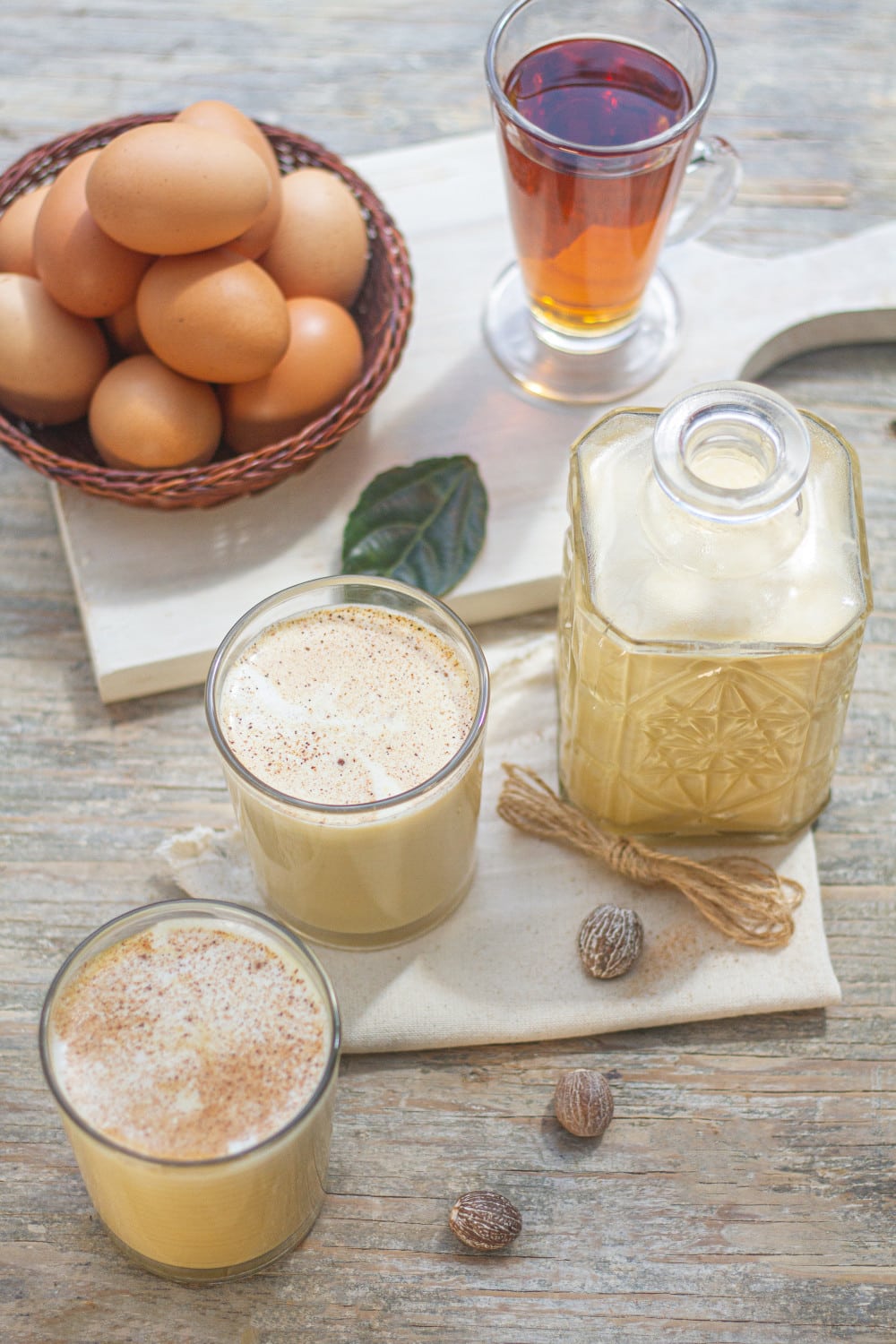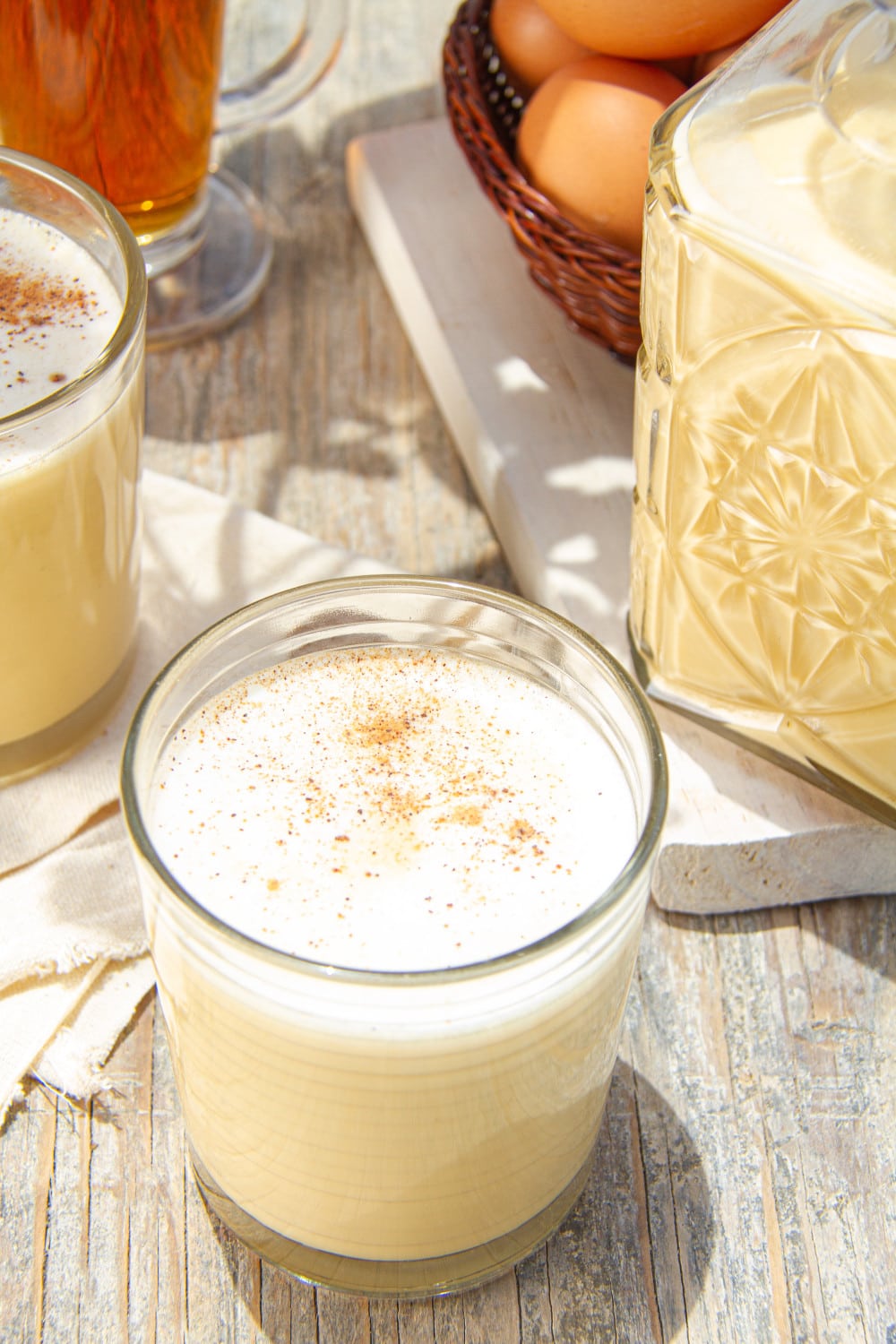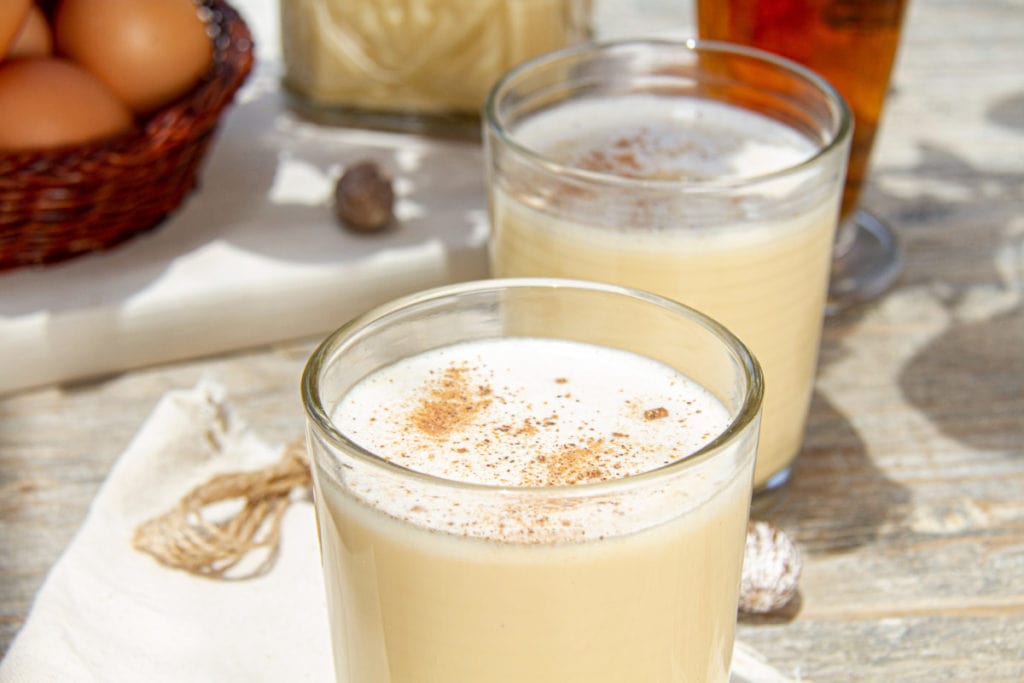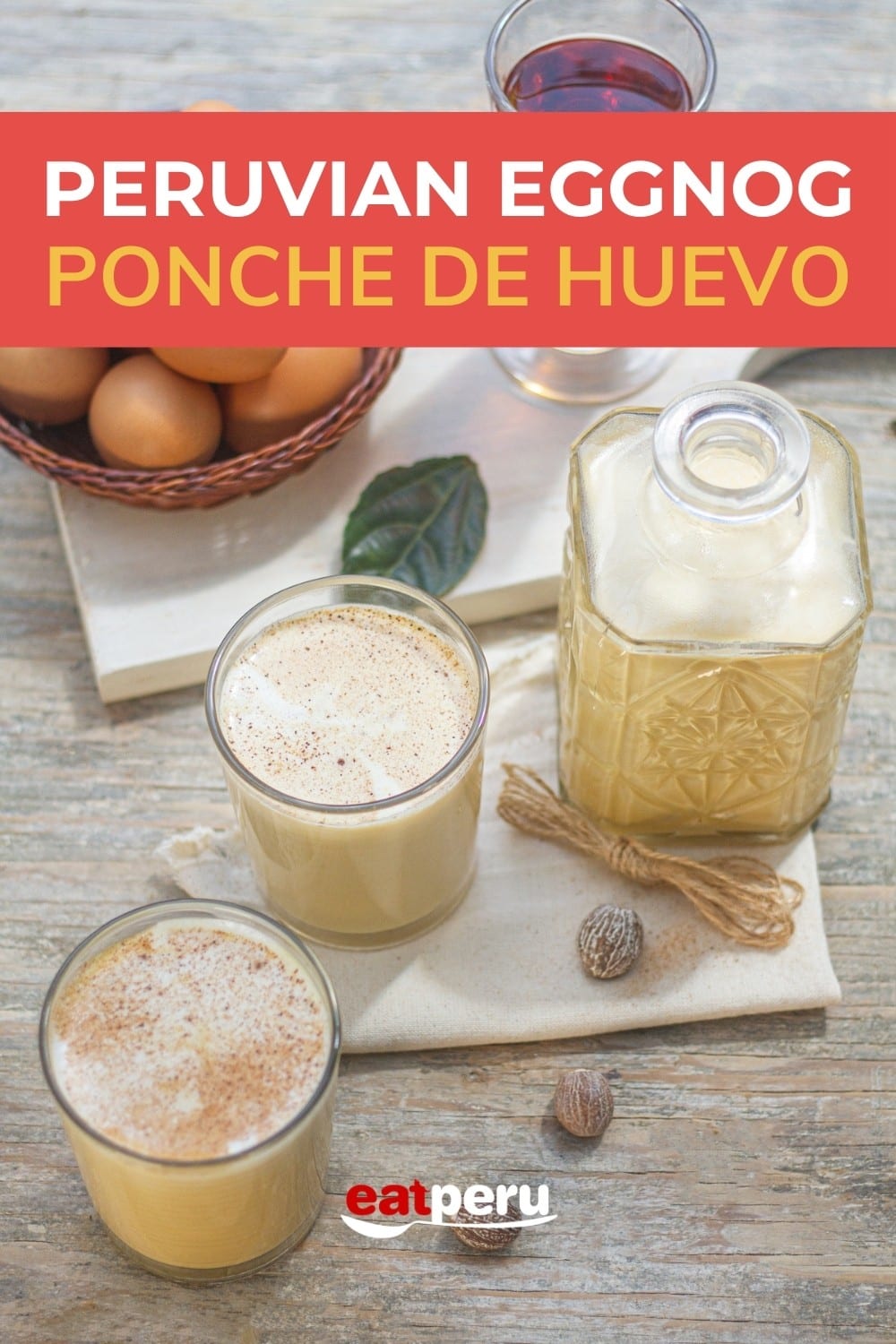Eggnog is a recipe that we typically associate with times of celebration and joy. Sharing the drink with family and friends is undoubtedly a great excuse to enjoy it with pleasure.
Many countries have their own variations on this recipe. However, the principle is the same. Traditionally, eggnog is drunk in celebration, and eggs, sugar and liquor are always present.
Origins & The Peruvian Connection
The eggnog recipe originated in high society in England in the seventeenth century. It was brought to the United States in the nineteenth century by farmers who took advantage of easy access to eggs and rum from the Caribbean, in order to create a mixture more similar to food we consume today.
In the Peruvian region of Piura, the drink is sometimes prepared according to the traditional recipe. And other times it’s prepared with beaten egg whites and Chulucanas lemon juice. It is also common in Jaén province, in the region of Cajamarca, where it has been consumed for years.

The secret is in the preparation
The creaminess of the punch is achieved by cooking the starch in the flan. The first step is to make a flan with a commercial mixture like Royal. Then egg yolks are added, and the additional seasonings that give it the Peruvian touch. We will use lemon zest, vanilla and nutmeg. Also, you can add cloves and cinnamon, according to your taste.
This mixture is then beaten with stiff egg whites, rum, pisco, and condensed milk to get a creamy mixture. After mixing, it is very important to cool the punch well, for up to two hours.
When serving, it’s better to wait until the ponche de huevo is cold enough, and avoid adding ice because it will water down the drink.

Preparation How To
- Heat the milk, lemon rind, vanilla essence and nutmeg on medium to low heat in a pan. Stir regularly and don’t let the milk boil
- Remove the lemon and add the egg yolks and caramel flan
- Stir until the powdered flan dissolves
- Cook until the flan thickens
- Beat the room temperature egg whites until thick
- Add the flan, condensed milk, pisco and the rum and beat until a thick cream texture is achieved.
Notes and Tips
- In some cases, the flan mixture can stick to the bottom of the pan and form lumps. If this happens, pour the mixture into the blender glass, while avoiding scraping the bottom of the pot. Whisk it until the lumps are gone, then place it back in a clean, dry pot to continue cooking.
- If you like your punch very creamy, dissolve a tablespoon of cornstarch in the milk. With this simple trick, you will get a thicker punch.
- Pisco and rum have a fairly neutral flavor. For a unique blend of flavors, try adding ¼ cup of anise liqueur to the punch.
Frequently Asked Questions
How do I preserve Peruvian eggnog?
This drink is consumed cold, during Christmas celebrations. However, as its alcoholic content is quite high, it is possible to keep it without refrigeration for up to three months.
To preserve your ponche de huevo Peruvian eggnog, use thoroughly clean and completely dry glass bottles. Bottles should have a screw cap, preferably plastic, to prevent corrosion. Just when finishing the preparation of the punch, while it is still warm, pour the liquid into the bottles. Then store the bottles in a dry place, out of the sun.
Is it possible to prepare it without alcohol?
This typical Peruvian drink can be made without alcohol, and luckily this is not necessarily an impediment to enjoying good eggnog. The secret is to replace the amount of alcohol in the recipe with a similar amount of liquid milk.

Print Recipe
Peruvian Eggnog Punch – Ponche de Huevo
This traditional drink in Peru called Poncho de Huevo is a type of eggnog punch. Drink it during the Christmas holiday season or any special occasion. Here’s our recipe!
Servings: 8
Calories: 315kcal
Ingredients
- 3 cups milk 720 ml
- 6 egg whites
- 6 egg yolks
- 1 cup condensed milk 350 ml
- 1/2 cup pisco 120 ml
- 1 cup rum 240 ml
- 1 lemon peel
- 150 g. caramel flan 3 packets
- 1 tablespoon vanilla essence
- 1/8 teaspoon nutmeg grated
Instructions
-
In a saucepan, over medium-low heat, place the milk, lemon rind, vanilla essence and the pinch of nutmeg. Cook gently, stirring every so often, until the seasoning flavors the milk. It is important that the milk does not come to a boil. If you notice it starting to boil, quickly remove the pot from the stove.
-
Remove the lemon rind, then add the egg yolks and caramel flan.
-
Stir vigorously with a hand mixer, until all of the powdered flan dissolves.
-
Continue cooking until flan thickens. It’s ready when the surface is filled with large bubbles, and the color of the flan changes slightly. Turn off the stove and let it cool while whisking the whites until stiff.
-
Place the whites, at room temperature, in the mixing bowl. Beat it for at least five minutes until you get a thick and firm lather.
-
Add the prepared flan, condensed milk, pisco and the rum. Beat for a couple more minutes, until you get a thick cream. Keep the punch in clean, dry glass bottles.
Nutrition
Calories: 315kcal | Carbohydrates: 26g | Protein: 17g | Fat: 11g | Saturated Fat: 6g | Cholesterol: 187mg | Sodium: 149mg | Potassium: 419mg | Fiber: 1g | Sugar: 26g | Vitamin A: 445IU | Vitamin C: 2mg | Calcium: 238mg | Iron: 1mg









